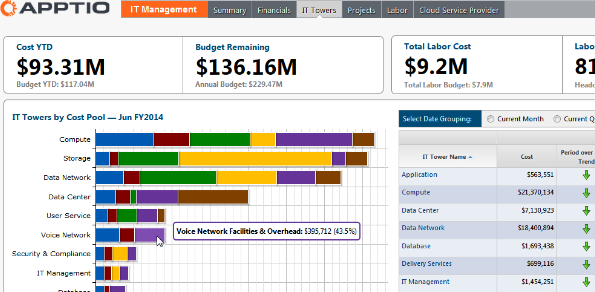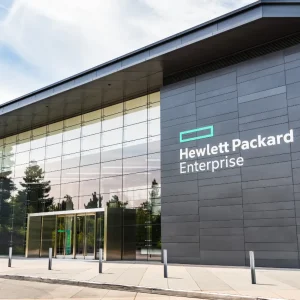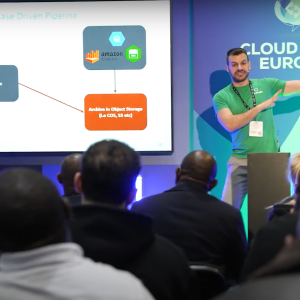
Will Technology Business Management become the new standard for effective IT financial management
The world of information technology does a great job at reducing business cost and streamlining and digitising operations. That is it does a great job for everyone else.
For finance, for production, for operations, for HR, for sales.
But is it generally accepted that to date it often hasn’t done such a great job at streamlining and optimising its own efforts.
Generally it still exists in a world where it is seen as a cost centre and the emphasis is always on reducing that cost. “Why does it cost so much?” is the usual CFO and CEO lament.
The real question of course is “Why does it cost so much and how do you know?”
It is time for the CIO to acknowledge a changing world. Move with the times, control your costs while showing value to the bottom line through actual believable figures. To be a driver in terms of growth you need to ensure your strategic bets are well placed…the only way to do that is to have a purpose built management system to so you can understand your strategy is being executed properly.
"The financial representation of that is what Technology Business Management. TBM allows you to measure the effectiveness of strategy appropriately,” says Chris Pick, Chief Marketing Officer at Apptio.
(For details of the the Technology Business Management Council see below).
Robert John Webb is the Group Information and Technology Officer at Etihad Aviation Group.
He told CBR: “It used to be when you installed a financial system, you called SAP, you called Accenture, you bought some kit from IBM and you stuck it in your data centre. And you had to do all the coding and interfaces to make that work.
You need a cost model to do that, and it’s a tradiontal tower based cost model. In today’s world you turn on a SAAS model, say, SAP simple finance in the cloud and it’s a subscription service. And you need to be able to compare investment levels in the cloud and investment levels in the old ways. There are dozens of domains to go through that exact analysis to make those types of calculations. So you are reimaging a financial system or an HR system.”
The question of whether the new way of doing things is cost effective is impacted by things such as SLAs. What happens for instance when SAP’s data centre in Amsterdam goes down and it’s running critical services. Suddenly the question of what SLAs you have subscribed to and signed up for become very pertinent.
Mr Webb says already with such considerations you are calculating the fully loaded cost and the SLA adjusted cost.
So the industry is at a point where visibility on costs of traditional systems is lessening and transparency of cloud costs is a fantasy.
Sunny Gupta, CEO of Apptio, a Technology Building Management software supplier and the lead player behind the Technology Business Management Council which now has over 300 CIO members and is working on TBM standards, says,
“The technology has a role in this. This is a world of software with a lot of innovation being built by hundreds of Apptio engineers and especially lots of innovation around data. CIOs say I don’t have operational, power and labour data – we have created an inference engine for this. A big part of cost structure is legacy and everyone is flying blind on run rate. Traditional cost is a black box, we turn int into a clear box to free up capital to invest in new world solutions.”
“In the new world of cloud our customers are telling us that in order to decipher the bills of cloud providers and make true comparisons about what my on prem linux service is costing compared with AWS and Azure on a fully loaded basis, it is not only the bill and cheque. A 100k bill is 100k line items. In this new world it is impossible to do this manually. And you can’t afford the risk in this new world of making decisions blindly.”
Robert Webb, says, “In Etihad it is about security, privacy, complexity, comms and culture. It is about sitting down and being transparent about constraints, and making choices. TBM allows us to make choices and be clear.
This takes into account the speed of change and the new risk taking and being comfortable with the higher risk environments and the only way to win in environment is through communications.”
For Sunny Gupta this leads into the new IT operations model and the skills change. My customers tell me I need Apptio to help my people become business people. “We are used to talking tech but have to develop skills to talk to business – you can turn them in to business people without me sending them to business school.”
However says Mr Webb says it is a victim mentality to say the business ‘wants this but and technology wants that.’ “We’re all business people.”
How most CIOs embrace the use of TBM is assess what they already have in their existing environment and use it to plan for future technology platform shifts. What they need to have is the strategic planning element, applicable to existing and coming investments.
One partner that provides advice on TBM is KPMG. David Yip, is a Partner at KPMG and TBM partner for EMEA.
He describes his role as working with global business technology leaders to support client engagement.
“We don’t position TBM as a cost it is framework for better managing IT. One of those dimensions is cost, but also service and value that business sees from IT. There’s a perception thing to be addressed: How to demonstrate how IT is delivering value. Service cost, or charge back? How to work on a peer to peer level, understand investment and provide a differentiator. The goal is not to become fixated on cost.”
TBM should not be seen as trying to mend a huge problem of IT, he warns.
Although there will always be basket cases, many big organisations don’t characterise IT as out of control.
Technical people talk technical language but one thing that is common is cash. The IT team think they are doing a good job and KPMG works with big organisations who work in a good service environment. It is about showing measureable cost and measurable value.
“It is a framework. Find out what you’re doing today and optimise cost, quality and demand. Use the framework and provide a measurement. The role of the CIO is no longer a builder and maintainer of a service. He is more a governance of IT delivery. CIOs should more concerned about helping business make decisions. “
An example is offered of three business units which all paid different prices for different quality. TBM helps identify commonality, scale and reduce inefficiency.
“Our measure of success is a CIO who can sit down in a boardroom and say ‘I can help you implement new market changing IT , reduce cost, find customers, without being a resource strain on budget,” says Mr Yip.
TBM is at the standards setting stage. The aspiration is that it will be like ITIL – needs more contributors – needs more adoption. We’re actively helping write some of those frame works.
The CIO at RSA Insurance is Pedro de Freitas. He describes insurance, an old fashioned industry that is about to be disrupted
Transformation is on the tech agenda. For the CIO TBM is the glue to understand the components and associated value and cost opportunity and putting aside TBM, it is about opening up partnerships.
“The tools create transparency. We are in the early stages. The noise is gone, now we’re moving from awareness to desire and knowledge. One of the key research pieces is the TBM tree and the increasing level of impact. First is transparency. Second optimise the IT side Separate price from cost. So you can get scale. As a CIO you shift from supplier to broker of IT services.
In the digital enterprise what are the cost of goods sold. IT is the platform. IT is as a service, but what is the consumption rate and usage of those services,” says Mr de Freitas.
It took six months of really heavy lifting to get the data about IT out of IT. This is data that is extremely reliable. It took a year or to get that out of the way.
He says: "We resisted the temptation to go data crazy for the sake of it. You need the standard. That’s the crux of what the industry is working on. A taxonomy is needed and to get general consensus of weight of taxonomy –what does it look like? It looks like GAAP (Generally Accepted Accounting Principles) reporting for IT – Common data associated with the standard is about getting everyone trusting and using the data in same way."
Rob Webb from Etihad takes the final word: “You can’t do this in Excel yet vast numbers of companies still doing it in Excel.
The Technology Business Management Council
IT is complex. IT spending is constrained for some, Steady for others and being redirected for many.
The IT industry does a very good job. It’s job is to keep enterprises, organisations be they multi-national globe striding corporations or start ups from someone’s bedroom. From government departments to hospitals and airlines to taxi companies, IT keeps the business going.
But, there’s a rub. Does it cost too much? Does it provide the necessary service? Can IT ever stop being the plumbing and become the water – can it make the business grow.
The Technology Business Council promotes best practice for CIOs running IT as a business.
The TBM is not a talking shop. It’s goals are to establish a set of standards for best practice to manage IT spend. Its members are building a framework, a taxonomy, an index. Transparency is the new word in IT spend. Segmentation is the new religion. Service management, service contract management and being and serving a new style of customer are the route to success.
TBM is not just about cost. But that is where it begins. Cost information.
Can you get a standard view of IT?
Todd Tucker, GM of the TBM says part of his role is to drive membership among CIOs which currently stands at over 2.500 to build the framework and establish standards. Visit http://tbmcouncil.org/






